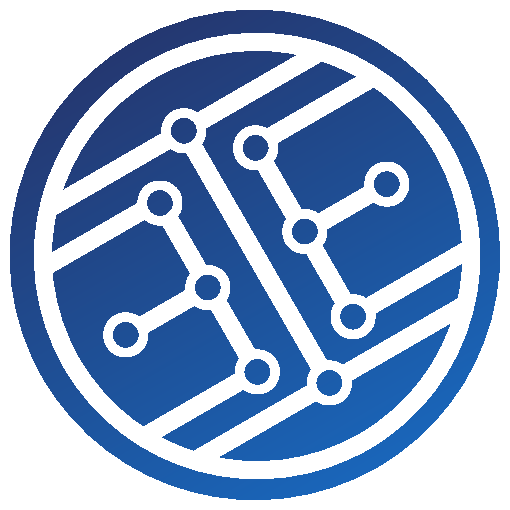 |
UNIVERSITY OF THE WITWATERSRAND,
JOHANNESBURG School of Electrical and Information Engineering |

UNIVERSITY OF THE WITWATERSRAND,
JOHANNESBURG
School of Electrical and Information
Engineering
Course Brief and Outline—2024
Professor Alan Robert Clark (course co-ordinator)
(011) 717-7223
AlanRobertClark@gmail.com
Antennas form a vital link between transmitters (receivers) and the propagation medium. As such they perform as electromagnetic transducers by converting current I, and voltage V into E, and H fields and vice versa. (Forgetting this leads to the iPhone4 antenna fiasco! (iPhone12 not much better…))
The sudden interest in all things “Wireless” was first ushered in by the phenomenal success of GSM, which has evolved exponentially.
Although from a DataComms perspective, we are simply the “air-interface” it is a very misunderstood area: it is ultimately the antenna (system) that determines the interface to the medium.
The main aim of lectures is to convey some experience, insight and intuition as well as to stimulate discussion.
Largely, High Frequency Techniques builds on the foundation laid by Electromagnetics to cover the Antenna Design aspects of the communications channel. However, any High Frequency (ie High Speed circuits) relies on the techniques developed in this course.
On successful completion of this course, the student is capable of:
A strong Electromagnetics background is assumed.
All submissions must be in strict accordance with the guidelines contained in the School’s Blue Book and the rules contained in the School’s Red Book. No exceptions will be considered.
It is an “Honours” year!
| Assessment | Duration | Component | Method & | Calculator | Permitted Supporting |
| Contributor | (hours) | Yes/No | Weight% | Type | Material |
| Lab | 3 | No | 20% | 3 | N/A |
| Project | 30 | No | 40% | 3 | N/A |
| Exam | 2 | No | 40% | 2 | Note |
Note:
7.10 Sub-minimum rule
Unless specified otherwise in a course outline, a student will not be
allowed to obtain credit for a course unless s/he achieves:
a) a final mark of at least 50 percent for that course; and
b) a sub-minimum of 35 percent in each of the components of that course as
well as in the summative assessment for that course.
Such a sub-minimum criterion applies only to components which contribute 25
percent or more towards a course, unless specified otherwise in the course
outline.
Summative assessment in this instance is assessment that regulates the
progression of students by awarding marks at the conclusion of a course.
The examination will cover all material covered in the course, and especially discussion topics in lectures.
The student’s understanding of the fundamental aspects of the course will be probed. Exam questions etc will need to be answered in order to answer the question: “WHY?” as opposed to the simplistic “HOW”. I am not attempting to assess a simple methodology, I will assess fundamental understanding of concepts.
Note that the onus is upon the student to convey this understanding in an examination. A terse, correct “answer” may not necessarily attract marks! Please refer to my exam writing skills notes at ytdp.eie.wits.ac.za/ExamWritingSkills.html.
For the purpose of Rule G.13, satisfactory performance in the work of the class means attendance and completion of prescribed laboratory activities, attendance at tutorials designated as compulsory in this CB&O, submission of assignments, writing of scheduled tests unless excused in terms of due procedure.
Covid-19 is not Covid-23: and thus we are fully back to Face-to-Face, not even Mask-to-Mask. But the (Hastily Assembled) material is still available on Ulwazi. Interaction is thus via lectures for those that wish to engage with real input. For those that eschew that, Ulwazi can work, but good luck to you :-)
A form of interaction is the Ulwazi Discussions which does support Mathematics (via MathJax). The advantage is that the Discussion is open to all in the class, and can be accessed at any time. I will thus also be using the Discussion asynchronously, checking in several times per week. Please stick to using the Pinned Generalised ChatRoom Facility.
Please do not email me questions, as the rest of the class will not benefit: use Discussions.
There is a prescribed text for this course, the same as was used for the Electromagnetics course.
There are no notes handed out for this course.
In addition, there is a 122 page “Study Guide”, by some obscure bloke:
available from the Course Home Page. (See below).
There will be two lectures per week. Students are expected to attend all lectures and to make their own notes.
I keep strictly to South African Standard Time (SAST). I respect your time, and will not drag on my lectures, and I expect you to respect my time, and that of your colleagues, by arriving on time, so that latecomer disruption is avoided.
There will also be a tutorial by arrangement only.
In common with all fourth year courses in the “Honours” year, there will be a project—see handout, deadline as per 4th year schedule.
There will be a laboratory associated with this course with a booking sheet posted later. The laboratory is felt to be an extremely important part of this course: hence the assessment rating. A thorough and properly presented report is expected. Students who cannot produce evidence of preparation will be asked to leave the laboratory.
School Policy states that there are no lab exemptions.
Via Ulwazi Discussions.
It is generally convenient to grab me between and after lectures.
For other information related to the course, please refer to the
Course Home page at
https://ytdp.eie.wits.ac.za/elen4001Home.html
Some of the eTexts referred to in EM may be of use:
Electromagnetics Course Home page at
https://ytdp.eie.wits.ac.za/elen3000Home.html
The online version is https://ytdp.eie.wits.ac.za/elen4001outline.html
This document was translated from LATEX by HEVEA.